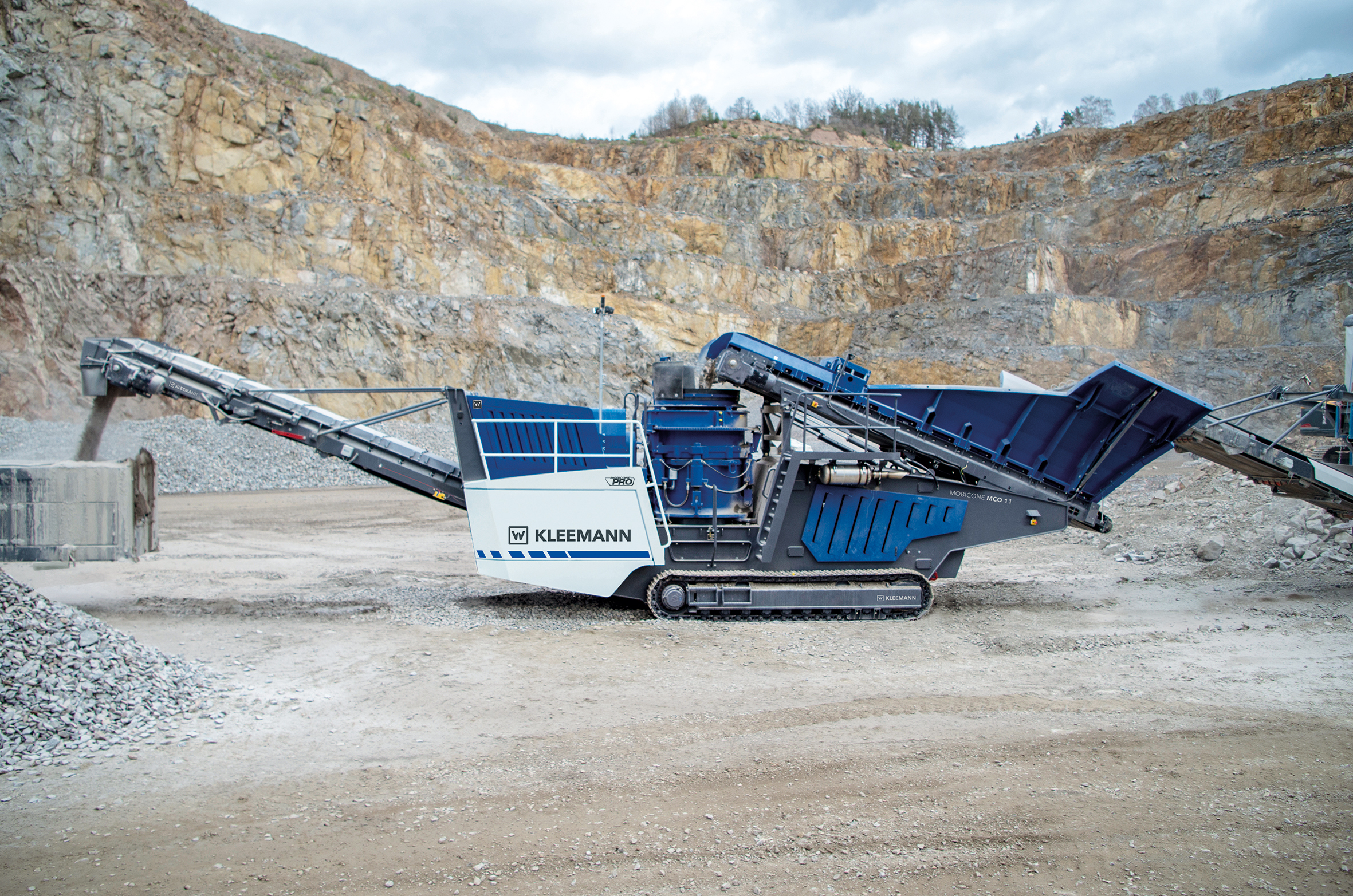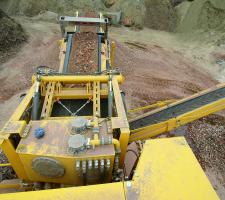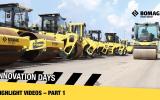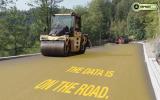
Among new entrants into the jaw crusher market is the MC 120 Pro, from Writgen company
Both the diesel-electric jaw crusher – operating as part of an interlinked machine combination additionally comprising the MCO 11 PRO cone crusher and MS 953 EVO screening plant – and the MBRG 2000 granulator showed off their high productivity at a live demonstration.
The MCO 120 PRO jaw crusher has a feed opening of 1,200mm x 800mm for pre-crushing almost all natural stones. With its robust crusher unit, long crusher jaw and a powerful crusher drive, it achieves maximum feed capacity of 650 tonnes/hour, according to Kleemann. Effective pre-screening is guaranteed by a double-deck pre-screen with an extra-large screen area of 3.5m².
The plant offers low-maintenance operation and flexible transportability because, in spite of its size, it can be transported in one piece. Particularly practical: the optional crusher unblocking system can loosen seized material without any problems so that the crusher is ready for operation at all times. Equipped with an optional discharge chute, the crusher discharge conveyor is protected against sharp-edged stones.
Like the MC 120 Pro jaw crusher, the MCO 11 Pro cone crusher comes with a powerful diesel-electric drive that supports external power supply. The 11 Pro cone crusher has an high hourly output of up to 470tonnes and is the perfect match for the MC 120 PRO in the secondary crushing stage, says the company.
Because the drive unit for the MCO 11 Pro is installed in the bottom of the plant, it has a low centre of gravity to ensure greater stability, a combination that also minimises noise and vibration. All plant components are easily accessible from the ground or from generously dimensioned platforms for maintenance and fueling.
Reduce costs
The H4 is designed to guarantee full capacity at low consumption costs with the aid of a directly driven 350tonne/hour crusher and electrical transport and screen components.
Keestrack’s track-mounted impact crusher units comprise three models, starting with the compact R3, which is proving itself on the market as a highly flexible 30tonne “construction-site crusher”. Keestrack’s top-range R6 flagship model has a total weight of a mere 6tonnes when fully equipped and remains the most prominent machine among the 1300-impactors for recycling, large-scale projects, and quarrying applications.
Thanks to the licence-exempt dolly transport the R6 readily competes with the much heavier competition within the 450tonne/hour performance class. Moreover, the large-scale “Destroyer” unit has been available for several years as an R6e model in a diesel-electric hybrid version with electric motors driving the conveyor belts and screen components.
Since 2014, the Keestrack R6e has been available with a 250kW electric motor for the crusher and an electric 110kW drive for the onboard hydraulic system. There is an optional all-electric plug-in operation from the mains. Thanks to a high-performance onboard diesel engine, up to 45% of the energy costs can be saved even in semi-stationary operations.
Meanwhile, Keestrack’s R5 has been up until now a mid-range series weighing between 42-50 tonnes with an overband magnet and double-deck final screen including oversize material recycler. But the company recently added the R5e, a diesel-electric version of its 350tonne/hour all-round model.
Similar to the larger R6e impact crusher model, the R5e has a highly efficient 5100kg rotor (B/Ø: 1000 /1260mm, feed hopper: 800mm x 1,050mm) driven directly by a 345kW Volvo six-cylinder diesel engine (TAD 1373 VE; EU IV) (rotor-by-diesel).
The operating hydraulics power all the lifting cylinders on the chassis and conveyor belts, the track drive, the vibrating discharge chute and double-deck primary screen and the compact double-deck post-screen module with oversize/stockpile conveyor. A 160kVA generator now supplies the power to all other conveyor systems – including the 5m³ vibrating feeder – and the new optional Keestrack Neodym overbelt magnets.
On the basis of the anticipated higher mobility compared to the R6e, the Keestrack’s R5e does not offer plug-in network operation. But it can drive the subsequently connected screens or stockpile conveyors (around a 38kW connected load) by way of the 63A supply.
With a total additional weight of a only 500kg compared to the diesel-hydraulic version, the electrical unit guarantees full mobility of the Keestrack R5e, which is also available with an optional dolly trailer chassis.
Keestrack says that practical tests have demonstrated a decrease in fuel consumption of up to 45% compared to diesel-hydraulic models. This is mainly due to a more even rotational speed of the high-torque
Vibrating screens
Recent additions to the vibrating screen market include
The “Running” cycle operates between 42-48Hz to screen particles and can be modified to specific needs. The short “Burst” cycle increases the vibratory motion to 60Hz for cleaning the screen to prevent blinding and increase productivity.
The H-Class’s modular design uses pre-engineered components, which allows the machine to be easily configured based on an operation’s machine size requirements. Haver & Boecker says that the H-class is especially effective for screening materials including phosphate and potash, making it key technology for the fertilizer industry.
For minimal structural vibration but tough applications, Haver & Boecker offers its Tyler F-class vibrating screen. The unit, says the company, is suited to scalping and classifying ores, minerals, stones, sand and gravel.
When paired with the latest Haver & Boecker technology, such as Tyler Engineered Media and the patented Ty-Rail quick- tensioning system, the company claims that up to 50% less downtime is achieved.
The F-class offers three screen decks and an advanced double-eccentric shaft supported by four high-performance, double-spherical roller bearings. The F-class is ideal for when there is a need for a consistent, load independent performance at constant g-force in all operational modes.
Because the machines experience minimal structural vibration, multiple screens can be placed side by side in the same building. To minimise downtime for screen media change-outs, the units have cambered decks with a Ty-Rail quick-tensioning system. This cuts media replacement time by about half.
Haver & Boecker notes that each F-class pairs well with the company’s signature Tyrethane media. This polyurethane media comes in both modular and hooked forms, eliminating the need for costly deck conversions. Long-wearing Tyrethane media options include Ty-Wire, Ty-Max and Ty-Deck.
Feeder upgrade
Canadian manufacturer McCloskey has introduced the UF1200 universal feeder which it claims delivers powerful and portable production at more than 650tonnes/hour.
The UF1200, designed for any application, can significantly enhance production levels, says McCloskey. It comes with a standard tipping grid, and offers a number of options including vibrating grid, aggregate hopper, mulch hopper or shredder.
Stockpile height at 24o reaches 4m, making the feeder an efficient partner for stackers.
It has a 1200mm-wide feed conveyor and a 10m³ capacity hopper. There is a choice of remote control tipping grid or live head, as well as tracked or wheeled versions for mobility on-site and from site-to-site. Ground level access ensures ease of maintenance and service.













